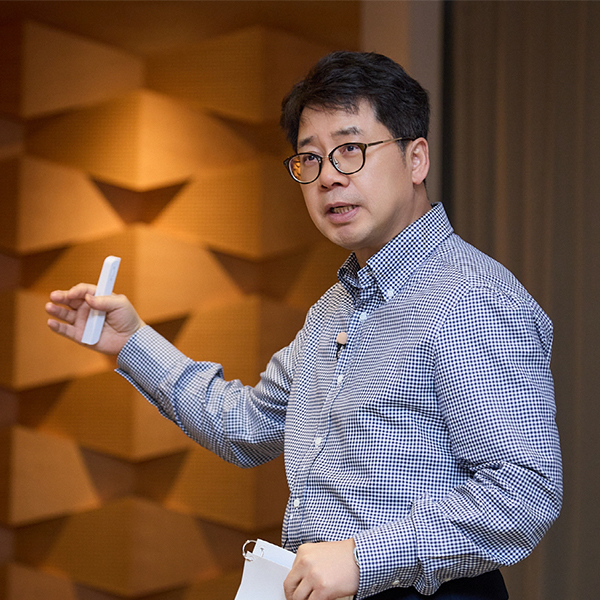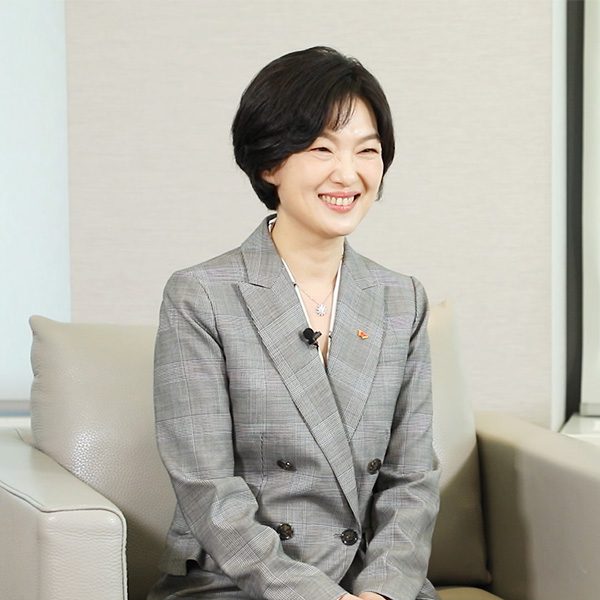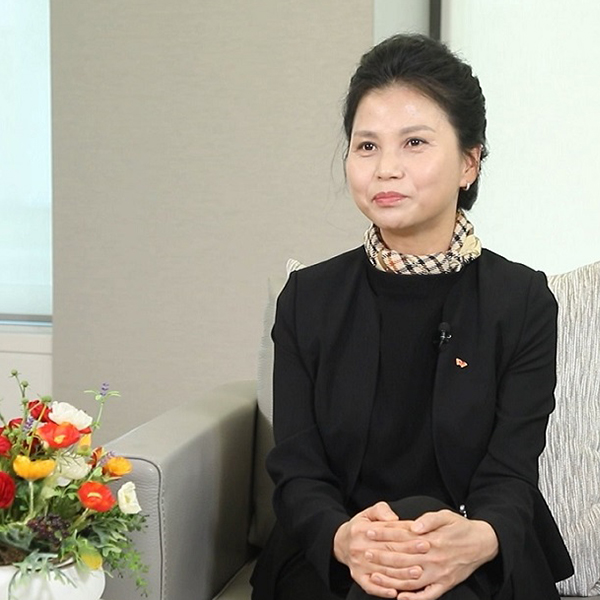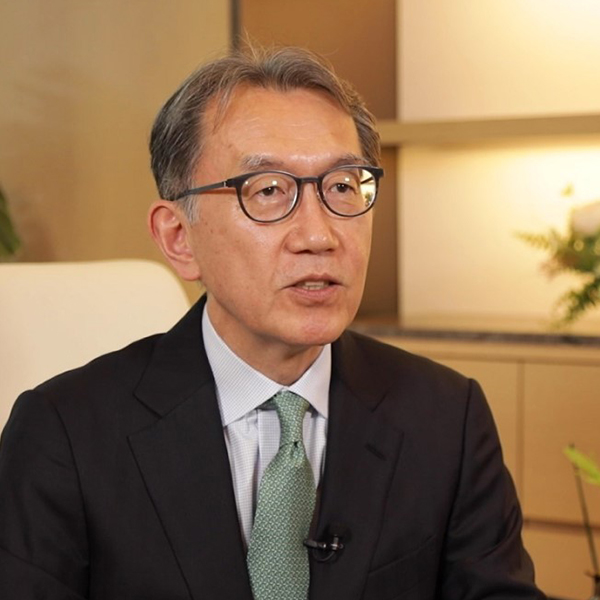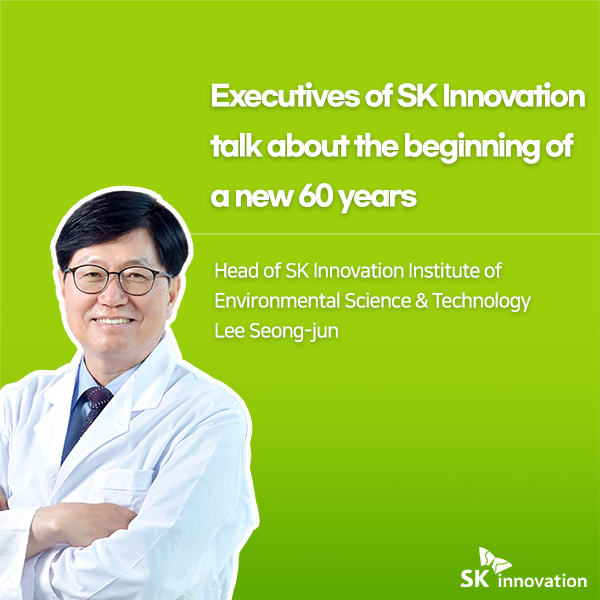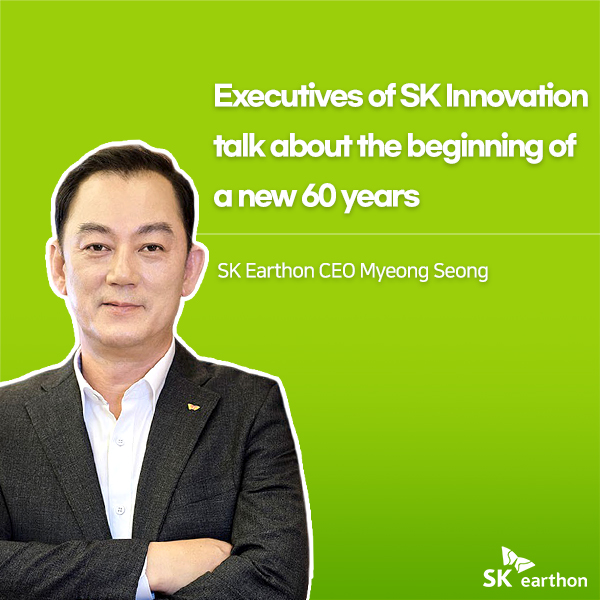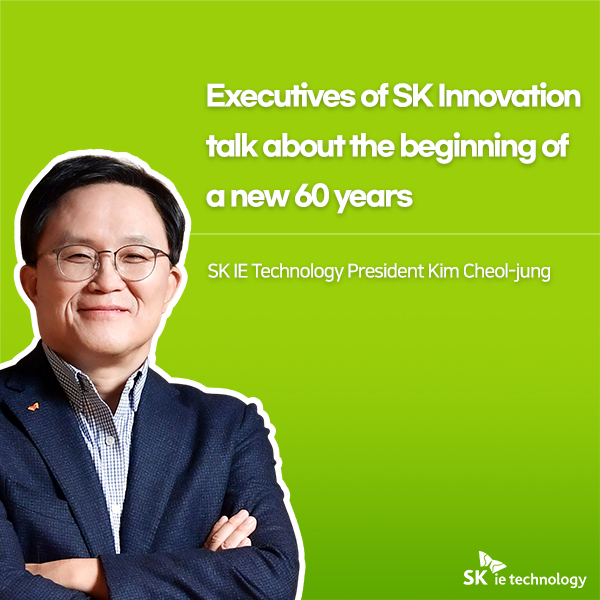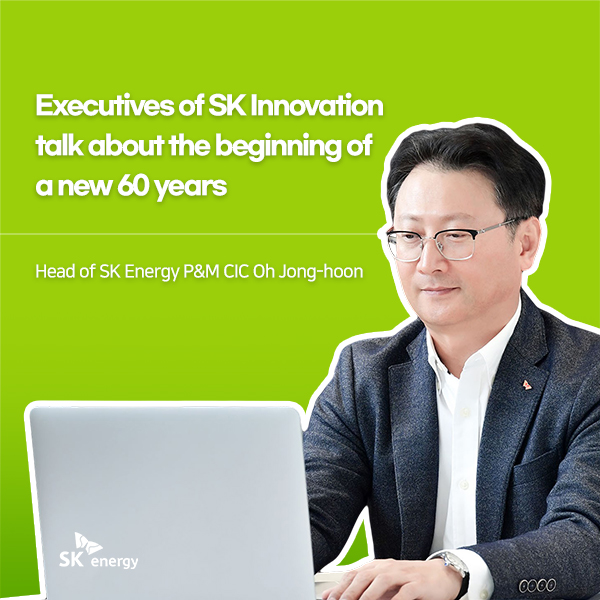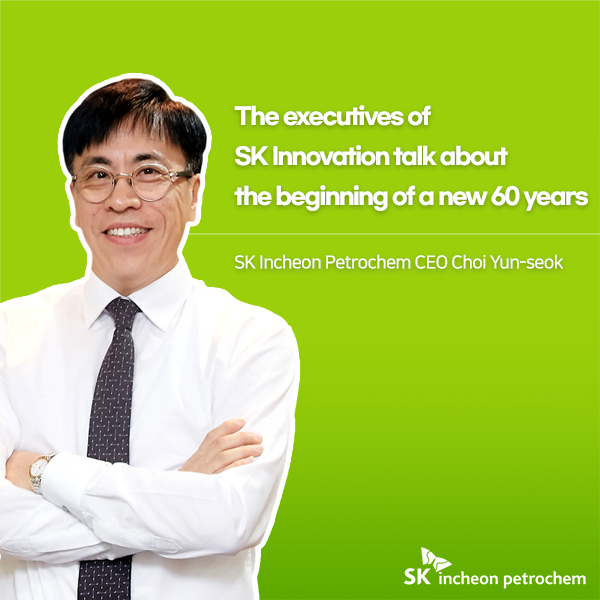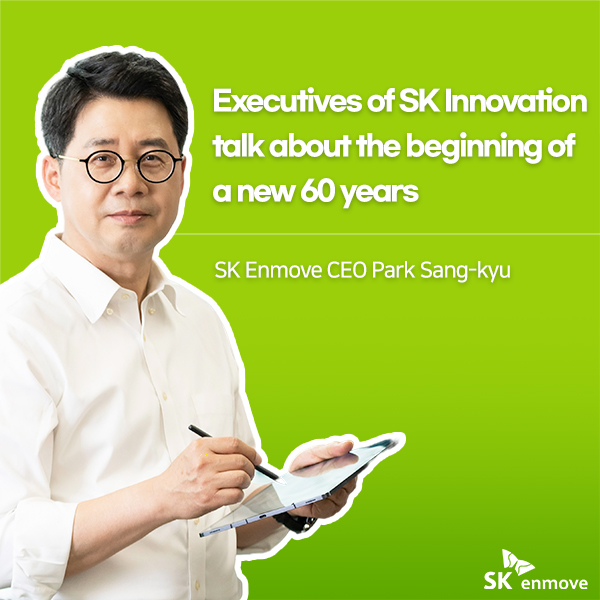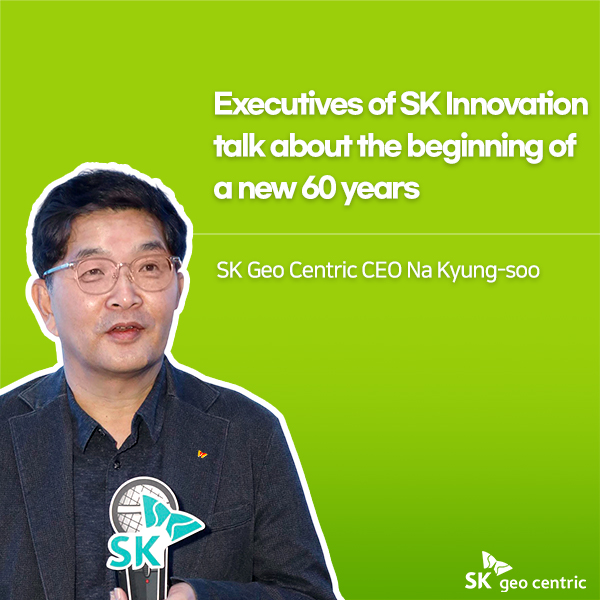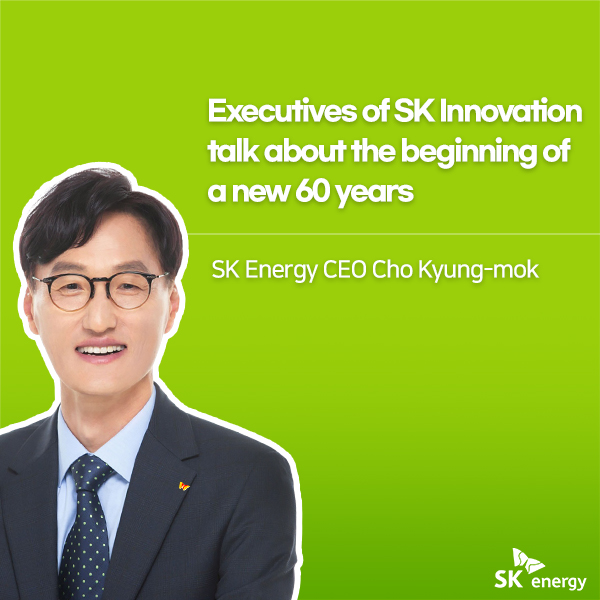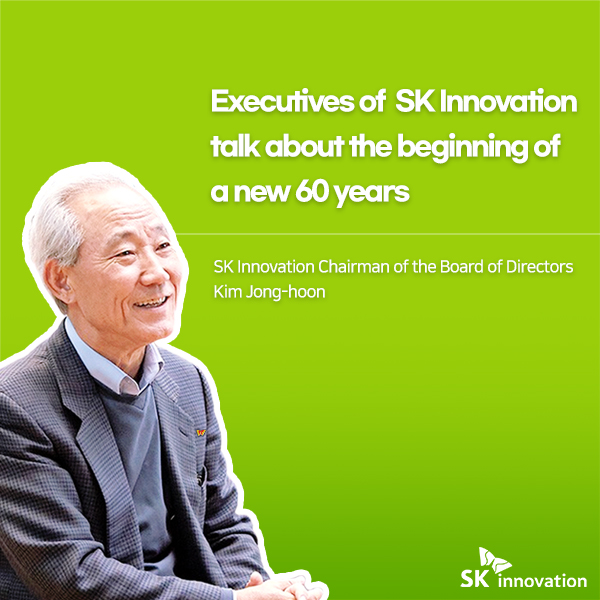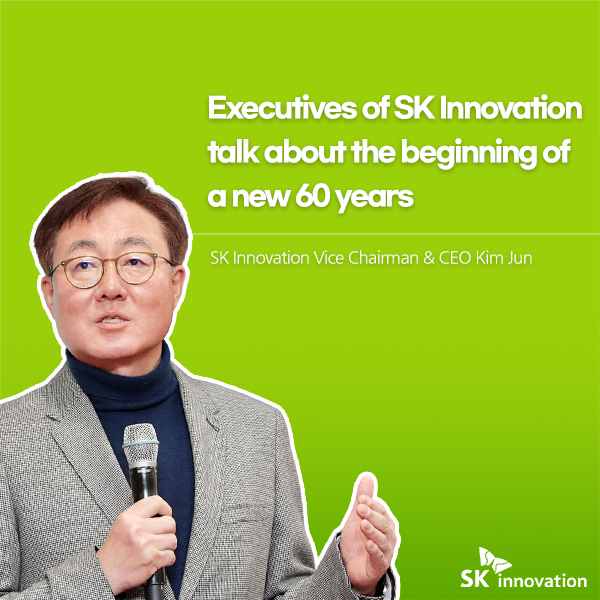 CEO & Leaders
CEO & Leaders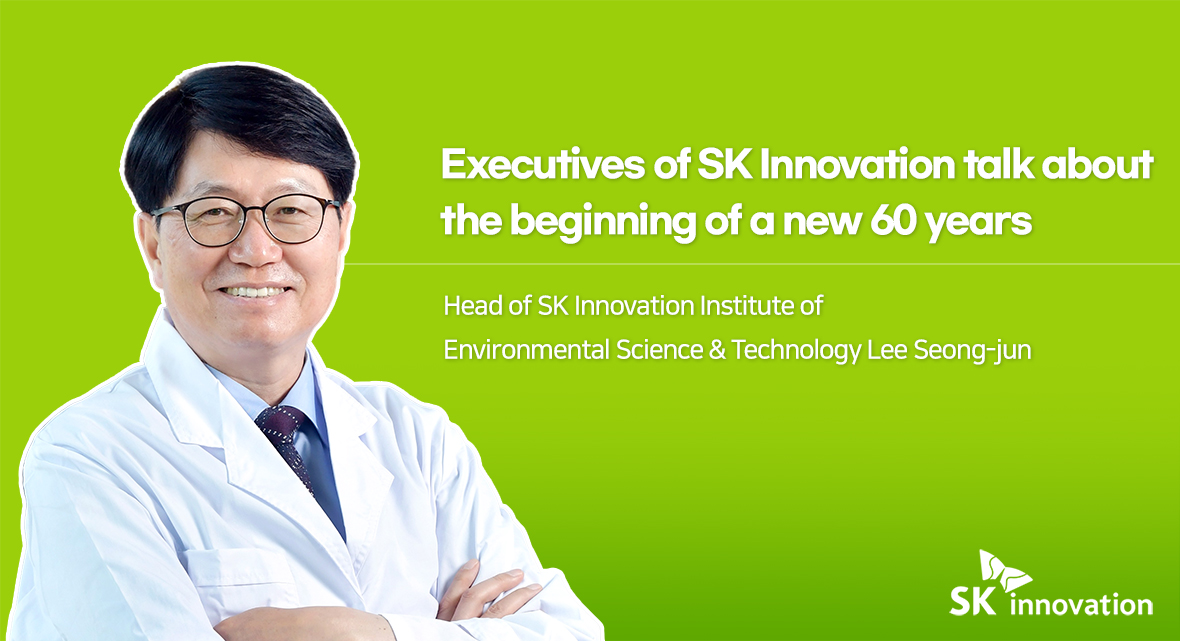
As SK Innovation celebrated its 60th anniversary in 2022, 2023 marks the beginning of a new 60 years of its history, and it is also the second year the company and all subsidiaries execute their Financial Story.
To learn more about the company’s strategies and plans for this year, we’ve met the executives of SK Innovation and its subsidiaries and asked them in detail.
In this episode, we would like to share our talk with Lee Seong-jun, Head of SK Innovation Institute of Environmental Science & Technology (hereinafter “the Institute”). Let’s take a look at Dr. Lee’s review of the Institute’s accomplishments in the last 40 years and strategies to achieve All Time Net Zero vision through various carbon reducing solutions.
Q1. 2022 marked the start of SK Innovation’s Financial Story implementation. Could you share with us a few highlights of the Institute’s activities last year?

▲ Head of SK Innovation Institute of Environmental Science & Technology Lee Seong-jun, (second from left) and Silicon Foundry CEO Neal Hansch (third from left) take a group photo at SK Innovation’s Open Innovation Post opening ceremony held on November 15, 2022 (local time) at Silicon Foundry headquarters in San Francisco, U.S.
Last year, members of the Institute have taken on many challenges and achieved many achievements despite the difficult business environment to realize SK Innovation’s financial story based on Carbon to Green strategy.
In the recycling sector, we have completed scale-up demonstrations of global top-level Battery Metal Recycle (BMR) technologies that recovers lithium and post-treated plastic pyrolysis oil processing technologies developed in Korea for the first time. We have successfully secured upcycling technologies of waste lubricant as well.
As for tasks to carbon emissions, we have resolved restrictions on the introduction of low-carbon raw materials, improved heat transfer efficiency, developed biofuel and eco-friendly asphalt producing technologies, and developed e-Thermal Fluid for liquid immersion cooling and automobile fuel efficiency improvement technologies. We also accomplished the development of various eco-friendly products and solutions, such as recycled waste plastic goods and high-value-added eco-friendly polymers. In the sector of information and electronic materials, we developed highly heat-resistant thin film separators, breakdown-voltage-enhancing insulation separators, and more to contribute to the improved safety of SK batteries.
Furthermore, last year our members developed the electrochemical catalytic conversion technology that converts carbon dioxide into carbon monoxide and the microbial conversion technology that removes carbon dioxide from exhaust gas using sulfur, a by-product of the petrochemical process, as energy, and obtained world-class results in this field. The results of those developments were published in international academic journals. I believe all these cases prove our platform technology capabilities, including process, catalyst, synthesis, analysis, and metal capabilities, that we have accumulated so far, are at a respectable level.
Based upon these technological accomplishments and capabilities, the Institute established the “Open Innovation Post” in Silicon Valley last year in order to practice close-type “Tech Sensing*” in a global technology hub. Through this center, we are designing and actualizing the collaboration with global tech corporations.
(*) Tech Sensing: discovering and connecting necessary technologies based on the understanding of technologies

Q2. This year, SK Innovation celebrates the 40th anniversary since the beginning of R&D management. Could you please take a brief recap of the history of the Institute?
SK Innovation started R&D management in 1983 by establishing a related organization and establishing a framework to realize the technology development desire emphasized by the previous chairman. Specifically, SK Innovation established the Technical Support Research Center (the predecessor of the Institute) in November 1983, and then completed constructing a building for R&D institute in Ulsan in November 1985.
As a “Green Portfolio Designer & Developer” that SK Innovation is seeking, we have to take high responsibility to accomplish our “All Time Net Zero” vision. We, therefore, are concentrating on “fast acquisition of competitive technologies through ceaseless innovation in ways of working.” Even though many new technologies in the Green sector keep emerging in the world, many of them are not mature enough, so the key is who completes and acquires competitive technology faster. From this perspective, we will discover promising technologies outside the Institute and combine them with the capabilities we’ve accumulated to speed up further in enhancing levels of technological completion.
Q3. “Green Anchoring” and “Green Transformation” are axes that SK Innovation has set up to practice the “All Time Net Zero” mentioned above. From that perspective, many people seem to pay attention to what the Institute of Environmental Science and Technology has been accomplishing.
Green Anchoring is a strategy that extends our business portfolio by anchoring in New Green and battery areas. And we’re developing the BMR technology as one of our core tasks. The BMR technology is to retrieve lithium hydroxide (LiOH) in advance by using water, hydrogen, and electricity. SK Innovation is making progress through the first commercialization of the technology in the world, aiming to minimize environmental impacts due to battery metal mining as well as completing a stable supply chain for highly pure lithium in the global battery circulation system.
Moreover, we’re conducting solution development that applies our capabilities of developing, analyzing, and processing battery materials as the battery industry’s core elements, which include high-performance separators (LiBS and CCS [Ceramic Coated Separator]), CNT conductive materials, next generation anode materials, and flame-resistant electrolytes, while providing capabilities of platform technologies required for battery-researching institutes in order to contribute to making outcomes in battery-related R&D.
We’re also promoting the value-up of investment-based technologies in the newly promoted business areas, such as ammonia and Small Modular Reactors (SMRs), which are major options in future electrification. And we are examining opportunities to enter the New Green Technology area, such as hydrogen or water treatment, while seeking next generation eco-friendly technologies as well.
Meanwhile, Green Transformation is a strategy to reduce CO2 emissions from existing businesses and also to transform existing business models into eco-friendly ones. To give some prime examples, we developed the first domestic technology that refines waste plastic pyrolysis oil into recyclable quality equivalent to existing petrochemical raw materials. Originally, plastic pyrolysis oil had to be used as low-grade boiler fuels due to its many impurities. But our plant that successfully commercialized the technology will start its operation from 2025. In the energy sector, our development of a fouling-reduction solution for in-plant processing contributed to the decrease in CO2 emissions at complexes in Ulsan and Incheon. And we are continuously developing technological solutions required for Green Transformation of our business corporations, including technologies to remove constraints against the introduction of low-carbon raw materials and to produce eco-friendly petrochemical/biofuels and eco-friendly asphalt.
And we also developed technological solutions necessary to expand the eco-friendly business models of our corporations, while developing a lubricant oil technology to enhance automobile’s fuel and electricity efficiency, a Lube Upcycling technology for recycling waste lubricant, and a Thermal Fluid technology of liquid immersion cooling for data center/battery by applying our capabilities in formulating our base oil and other products, and more. In addition, in order to collect and process CO2 generated from manufacturing procedures, we’re participating in a national project that promotes the demonstration of Carbon Capture Storages while developing the next generation CO2 absorbing materials and optimizing the production processes.
Based on our own capabilities, We have contributed to the construction of a comprehensive plastic recycling complex called ARC (Advanced Recycle Cluster) being built in Ulsan by verifying and improving external technologies such as a supercritical contamination extraction technology, a pyrolysis technology, and r-PET depolymerization technology, which is highly regarded as the most advanced in the recycling sector.
Q4. You addressed “Global Innovation Post” newly established in Silicon Valley in order to acquire the close type Tech Sensing. Please explain its functions.
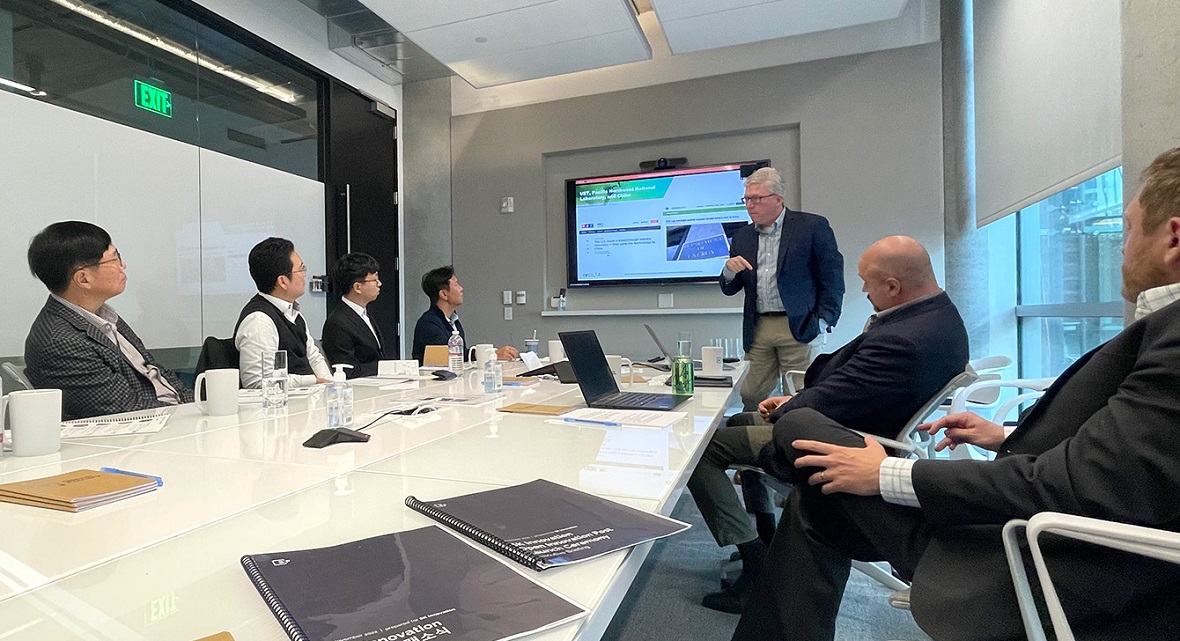
▲ Head of SK Innovation Institute of Environmental Science & Technology Lee Seong-jun, (second from left) and Silicon Foundry CEO Neal Hansch (third from left) take a group photo at SK Innovation’s Open Innovation Post opening ceremony held on November 15, 2022 (local time) at Silicon Foundry headquarters in San Francisco, U.S.
The Global Open Innovation (O/I) Post is one of our achievements after the institute has been promoting “Open Innovation” since 2018. The “Open Innovation,” as you know well, is a method that a corporation speeds up in future technology development or reduces its uncertainty effectively through collaboration with startups, colleges, research institutions, and external experts. SK Innovation is expecting constant outcomes to be made in Silicon Valley as well by applying this method.
There are already intensified competitions in the green technologies area, which SK Innovation essentially needs to complete the Green Anchoring and the Green Transformation strategy under the Carbon to Green initiative. Thus, the most important factor in securing the technology is to perform and to rapidly assess Tech Sensing directly in the local area where the technology we want is being developed. In order to achieve this, from a perspective of “a great shift in ways of working,” we established the Global O/I Post in Silicon Valley, the hub of global technologies.
The Global O/I Post, based on close collaborations with local technical experts and institutes from each industry, will discover and assess necessary technologies in electrification and recycling fields, and also secure the next-generation technologies by designing more efficient value-up cooperation works. I believe the O/I will also greatly enhance SK Innovation’s Global Open R&D capabilities and our own presence and reputations in the ecosystem of the local industry.
Q5. As you mentioned, ‘innovation in the ways of working’ probably is a great shift to acquire global capabilities for the whole corporation portfolio and R&D. The institution worked with an ammonia-based fuel cell system corporation in the USA last year. What results has the institution obtained from its global cooperation like that? And I would like to know the current status of the institute’s global network.
At “SK Innovation Global Forum” held in San Jose in last June, Vice Chairman Kim Jun delivered a keynote speech and gave a message that ” SK Innovation will drive forward the future business growth through development and expansion of low-carbon Green Portfolio, based on differentiated technologies.” What you mentioned in the question that we invested into and cooperated with Amogy, a US-based corporation specializing in ammonia-based fuel cell systems, was decided from that perspective too.
Since ammonia is a compound of hydrogen and nitrogen, any separate extraction of hydrogen allows it to be used as a fuel that produces electric energy. Due to its liquefaction point for storage and transportation is -33 degrees Celsius, which is even higher than hydrogen (-253 degrees Celsius), ammonia has the advantage of low energy consumption and low carbon emission for liquefaction. It also has a wide range of areas of application, from large commercial transportation, such as cargo ships and trucks, to the green mobility market, such as carbon-free forklifts, agricultural machines, and drones.
To quickly adapt to this future markets, we’re aiming for more than just simply investing into Amogy. We’re also pushing forward with technological cooperation that involves SK Innovation’s accumulated capabilities to complete our technologies faster. This kind of global cooperation system in pursuit of green energy and materials will be promoted in other areas as well.
We’ll keep making more technical ties-ups and other forms of cooperation with external bodies so that the external startup ecosystem is widely aware of SK Innovation’s capabilities and recognizes us as a reliable partner.
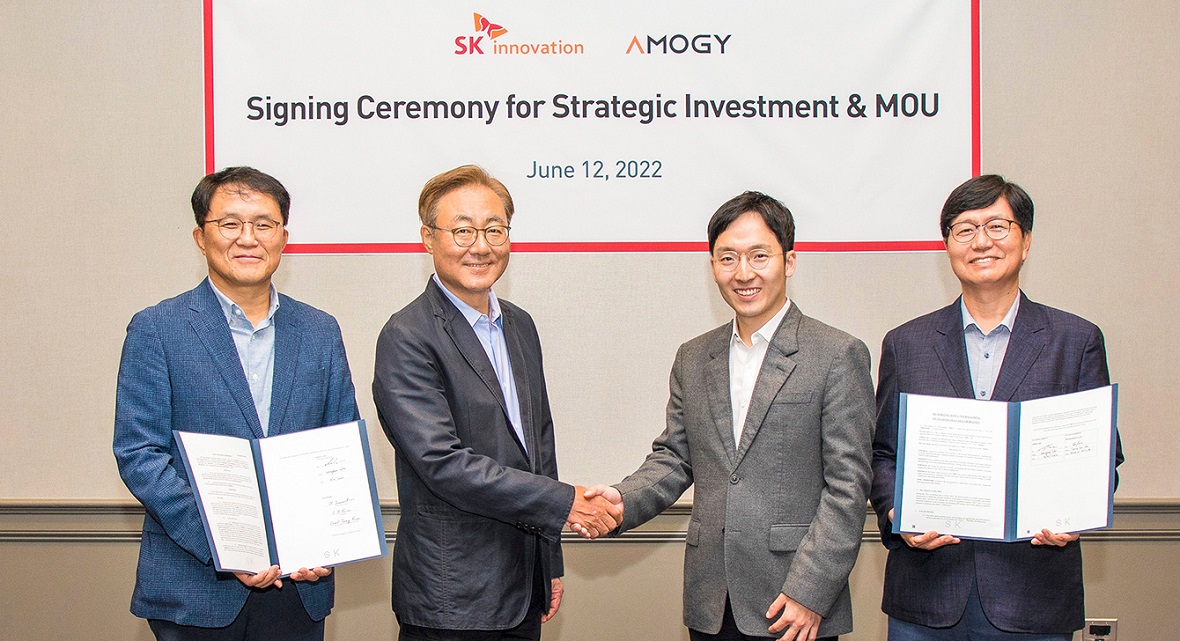
▲ (From left) Kim Cheol-jung, Head of Portfolio Divisional Group, Kim Jun, Vice Chairman of SK Innovation, Woo Seong-hoon, CEO of Amogy, Lee Seong-jun, Head of Institute of Environmental Science & Technology
Q6. It seems a close and organic cooperation system between relevant organizations is essential to achieve All Time Net Zero. And among the organizations, the role of the Institute of Environmental Science & Technology appears to be particularly important.
SK Innovation has been contemplating and preparing solutions in advance about global environmental issues and related policy changes. The Institute of Environmental Science & Technology is closely working together with relevant departments to accomplish the Net Zero based upon objective results and has established an exclusive LCA** department which will analyze and respond to methodologies for global eco-friendly policy while securing its expertise, such as judge qualifications.
(**) LCA (Life Cycle Assessment): A method to quantify, identify, evaluate, and improve potential environmental impacts that may occur throughout the life cycle of the product. The potential impacts include how uses of energy and mineral resources during mining, processing, assembly, transporting, and disposal of a whole product can add environmental loads on air, water, and soil.
Particularly as clients, partners, governments, and other stakeholders are increasing their demands to verify environmental impacts from not only products but also raw materials, which even corresponds to Scope 3*** from Scope 1 and 2, the Institute of Environmental Science & Technology responds to demands based on its expertise and conducts third-party verification to ensure objectivity and transparency in the results.
(***) Scope 1/2/3: Classification system of greenhouse gas emission sources. Scope 1 covers the direct emissions that occurs during the product production stage. Scope 2 covers the indirect emissions that occurs in the process of generating electricity and power for the workplaces. Scope 3 covers the external emissions that occurs throughout the entire value chain, including logistics, usage, and disposal or in partner companies.
Based on our expertise, we can calculate the Scope 1, 2, and 3 carbon emissions of all products from the mining stage to use and disposal of raw materials, including energy/chemical products and battery/materials products, and share the results with our customers. For instance, we’re contributing to creating business outcomes of SK Geo Centric by responding to various LCA methodologies, environmental impact category**** results, or LCA audits that the corporation’s customer companies demand. And recently, we also expanded the LCA analysis scope of asphalt products made by SK Energy to a phase where a Japanese asphalt customer company stores and sells its products.
(****) Environmental impact category: global warming, water consumption amount, acidification, eutrophication, human toxicity, ecotoxicity, destruction of the ozone layer, etc.
The Institute of Environmental Science & Technology will apply its carbon emission predictions to new products to be developed in the future as well to contribute to the accomplishment of the Carbon to Green initiative. In other words, the Institute of Environmental Science and Technology will become a technological logistics base as well as a radar center that will complete All Time Net Zero, the most prominent topic of the whole corporation.
Q7. Finally, please share what you would like to tell stakeholders and our members.
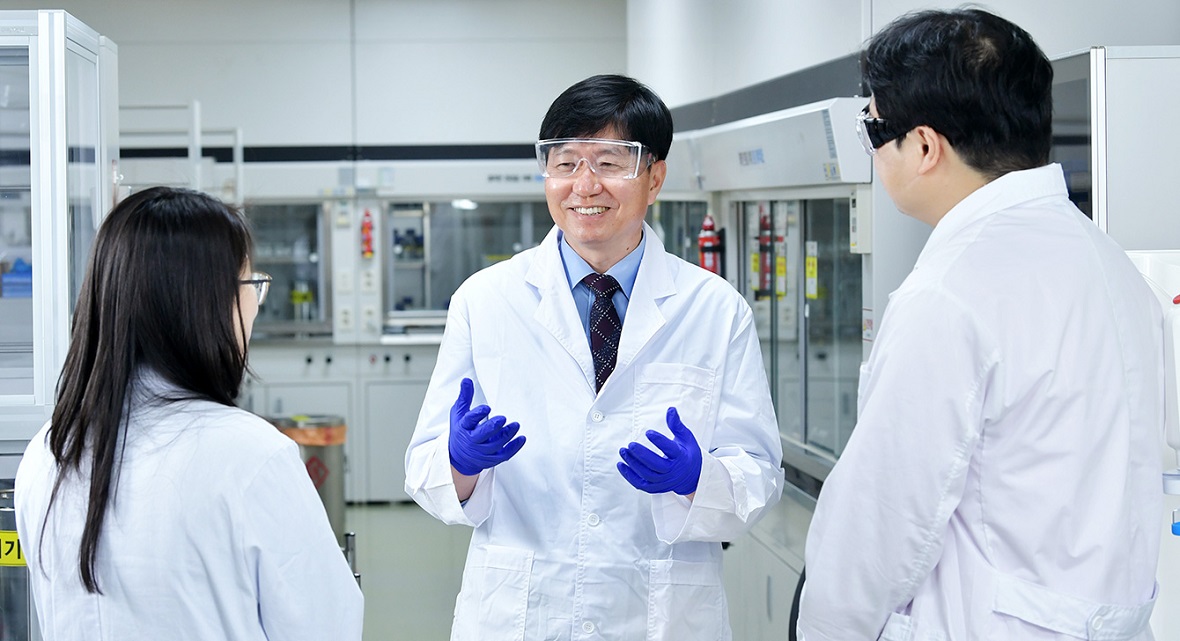
As the global recession is expected to deepen, the possibility of worsened business environment is increasing. In this situation, I believe we should very seriously take a sentence that SK Group Chairman Chey Tae-won quoted from the Art of War at the SK CEO Seminar held in October of last year, “finding a different way rather leads us to a more favorable position and overcoming the adversity can make a good opportunity for us.”
The institute is a place where its members build and develop their capabilities by voluntarily and willingly participating in new areas, keeping up with expansions and changes in the company’s business portfolio. Through this, we expect to continue to grow together with the company and acquire competitiveness.
SK Group has announced that it would reduce 200 million tons of carbon emissions equivalent to 1% of the worldwide carbon reduction goal as of 2030. As the head of the Institute, I feel grave responsibility and duty to secure technological solutions for carbon reduction. For that purpose, the Institute is promoting a project to create the Green Research Institute that can concentrate SK Group’s all capabilities of environmental technologies in the metropolitan area, as sealing an MOU for the project in January of 2022. Discussions for land purchase and others are in progress even now, and I am expecting the facility to be a foundation to accomplish SK Group’s goal of greenhouse gas reduction and to acquire technological competitiveness in the green business areas.
Overcoming the climate crisis through carbon reduction is the top priority for which we all must take responsibility and work out to achieve happy tomorrow for humanity. I hope our stakeholders and members share good ideas, develop promising technologies together, and join SK in action to reduce greenhouse gas emissions. I request a lot of attention and support for SK as well as the Institute of Environmental Science and Technology. Thank you.










 Youtube
Youtube Facebook
Facebook Instagram
Instagram Linkedin
Linkedin








